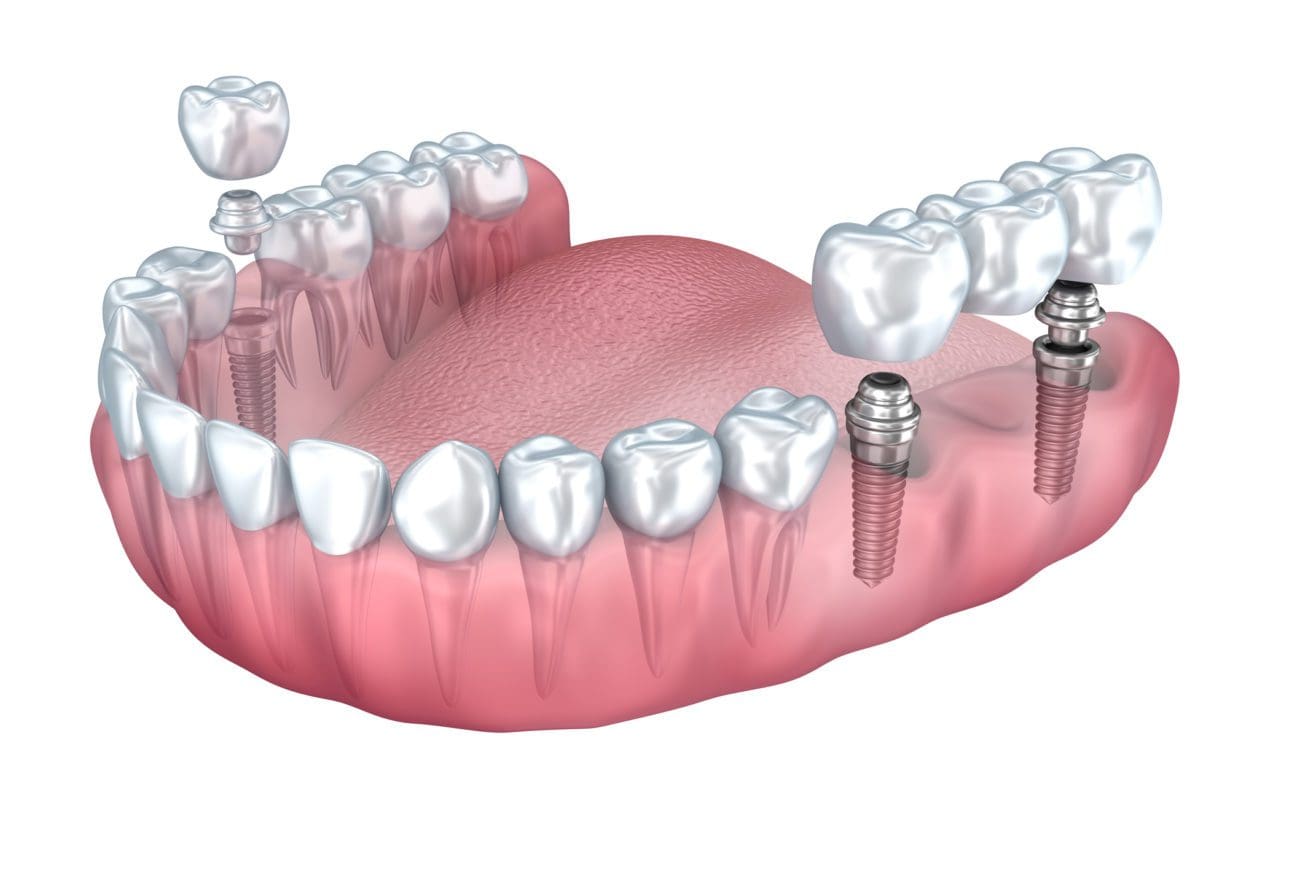What Does Dental Sense Do?
What Does Dental Sense Do?
Blog Article
The Buzz on Dental Sense
Table of ContentsThe Greatest Guide To Dental SenseAll about Dental SenseSee This Report on Dental SenseGetting The Dental Sense To Work
are medical gadgets surgically implanted into the jaw to recover a person's capability to chew or their appearance. They give support for synthetic (phony) teeth, such as crowns, bridges, or dentures. When a tooth is shed due to injury or disease, a person can experience problems such as quick bone loss, faulty speech, or changes to chewing patterns that lead to discomfort.Dental implant systems include a dental implant body and dental implant joint and might additionally include an abutment addiction screw. Root canal procedure. The dental implant body is surgically inserted in the jawbone in place of the tooth's root. The dental implant joint is usually affixed to the implant body by the abutment addiction screw and prolongs with gum tissues into the mouth to sustain the connected man-made teeth
(https://www.pubpub.org/user/matthew-music)Structure of The Oral Implant System choosing oral implants, talk to your oral provider about the potential benefits and risks, and whether you are a prospect for the procedure. Things to think about: Your total wellness is an important variable in identifying whether you are a good prospect for dental implants, how much time it will take to heal, and the length of time the implant might stay in area.
Smoking might impact the recovery procedure and lower the long-term success of the dental implant. The recovery process for the implant body may take a number of months or longer, during which time you typically have a short-term joint in place of the tooth. the oral implant procedure: Meticulously adhere to the oral health guidelines provided to you by your oral supplier.
What Does Dental Sense Do?
Implant failure can result in the demand for an additional surgery to fix or replace the implant system. Restores the capability to eat Recovers aesthetic appearance Aids keep the jawbone from diminishing due to bone loss Protects the health of the bordering bone and periodontals Aids keep adjacent (close-by) teeth steady Enhances lifestyle Damages to bordering all-natural teeth throughout implant placement Injury to the surrounding cells during surgical treatment, such as sinus opening Injury during surgical treatment (as an example, fracture of bordering jawbone) Insufficient feature, such as seeming like the teeth do not bite together usually A feeling that the tooth hangs or turning in position arising from an abutment screw loosening up Implant body failure (looseness of the implant body) as a result of systemic infection, which might be more probable in people with unrestrained diabetes mellitus due to neighborhood infection in bone and periodontals sustaining the dental implant body as a result of postponed healing, which might be most likely in people who smoke Difficulty cleaning up the gums around the dental implant, causing bad dental health Unattended periodontal condition Post-surgical feeling numb due to nerve impingement or damage Always alert healthcare service providers and imaging service technicians that you have dental implants before any type of magnetic vibration imaging (MRI) or x-ray treatments.
FDA is not knowledgeable about any type of negative events reported for MRI or visit this website x-ray procedures with dental implants. Dental implants systems are usually made of products that adhere to global consensus standards of the International Company for Standardization (ISO) or ASTM International. These standards have details of what makes a secure material.

A dental implant is a structure that replaces a missing out on tooth. With screw-like devices, the doctor inserts a dental implant into the jawbone, and it serves as an anchor for a synthetic tooth, called a crown. A gadget called a joint connects the man-made tooth to the dental implant. The crown is personalized to fit the person's mouth and match the shade of their teeth.
Unknown Facts About Dental Sense
Some people are not eligible for dental implant surgery. It is for oral surgeons to operate on people with: severe illnessuncontrollable metabolic diseasebone or soft cells condition or infectionIf these issues are fixed, an individual can have the surgery. In, dental specialists avoid from operating people with: If individuals with any of the above undergo dental implant surgery, there is a higher risk of the implant failing.

Dental implant surgical procedure is an individualized procedure. It's not the same for everybody. But the following offers a basic review of what you can anticipate your dentist, dental cosmetic surgeon, periodontist or prosthodontist to do: Place the implant surgically. Give you time to recover. Affix the post and final crown, bridge or denture.
Next off, your cosmetic surgeon will thoroughly put the dental implant into your jaw. If your dental implant is near the front of your mouth, your dentist will certainly make a momentary tooth for you to put on up until you heal.
Everything about Dental Sense
Your supplier can inform you what to expect in your situation. During the healing phase, your jawbone ought to fuse to the dental implant. This procedure, called osseointegration, is vital for security and long-term success. This process can take anywhere from three to nine months. In some situations, it may take much longer.
When your dental implant heals, your dental professional can connect the joint (little connector message) and your last reconstruction (crown, bridge or denture). This generally takes about one hour to finish and may require a 2nd minor surgical treatment. You shouldn't really feel any discomfort during your oral implant treatment because your provider will certainly make use of drug to numb your periodontals.
Report this page